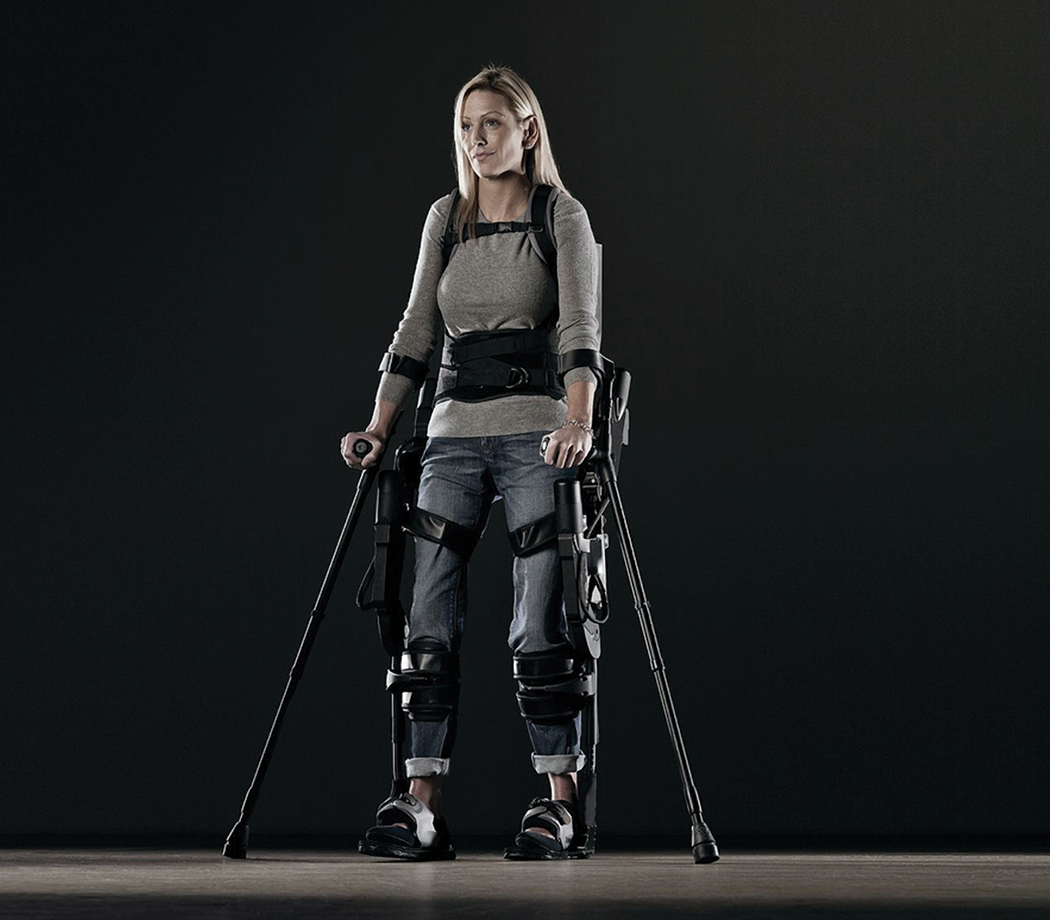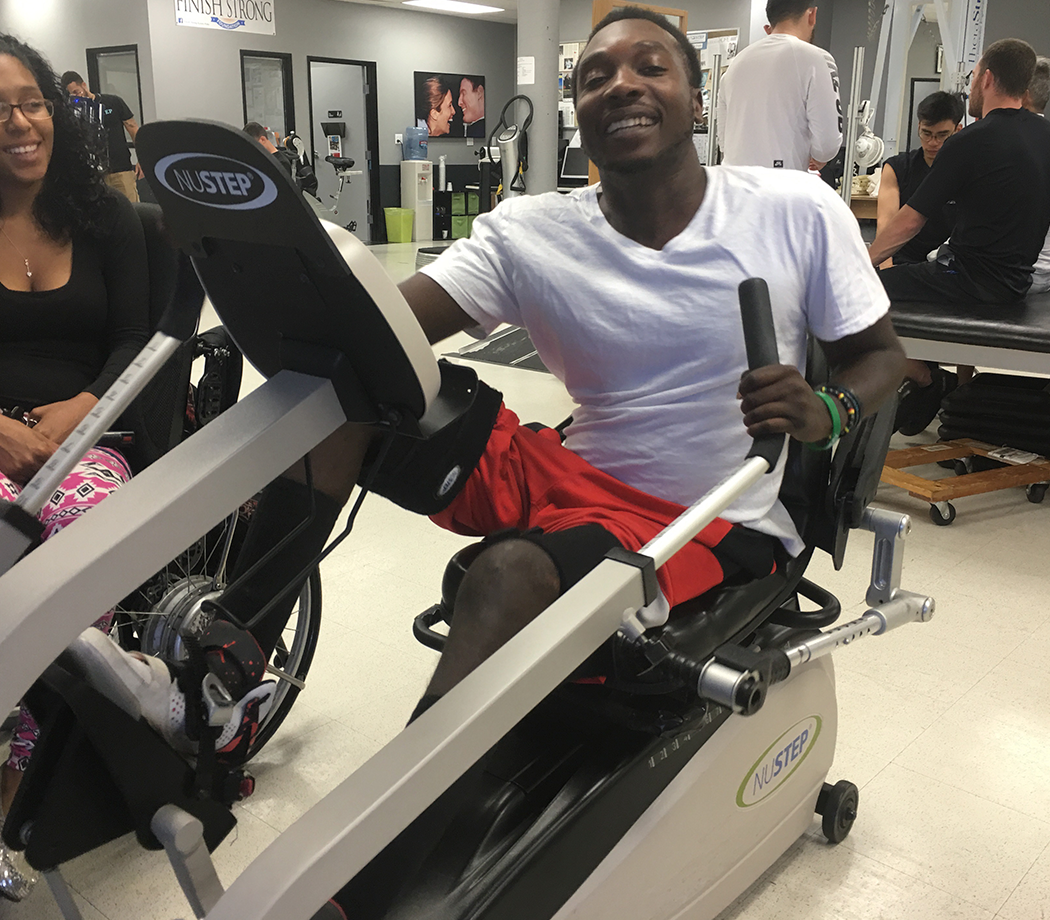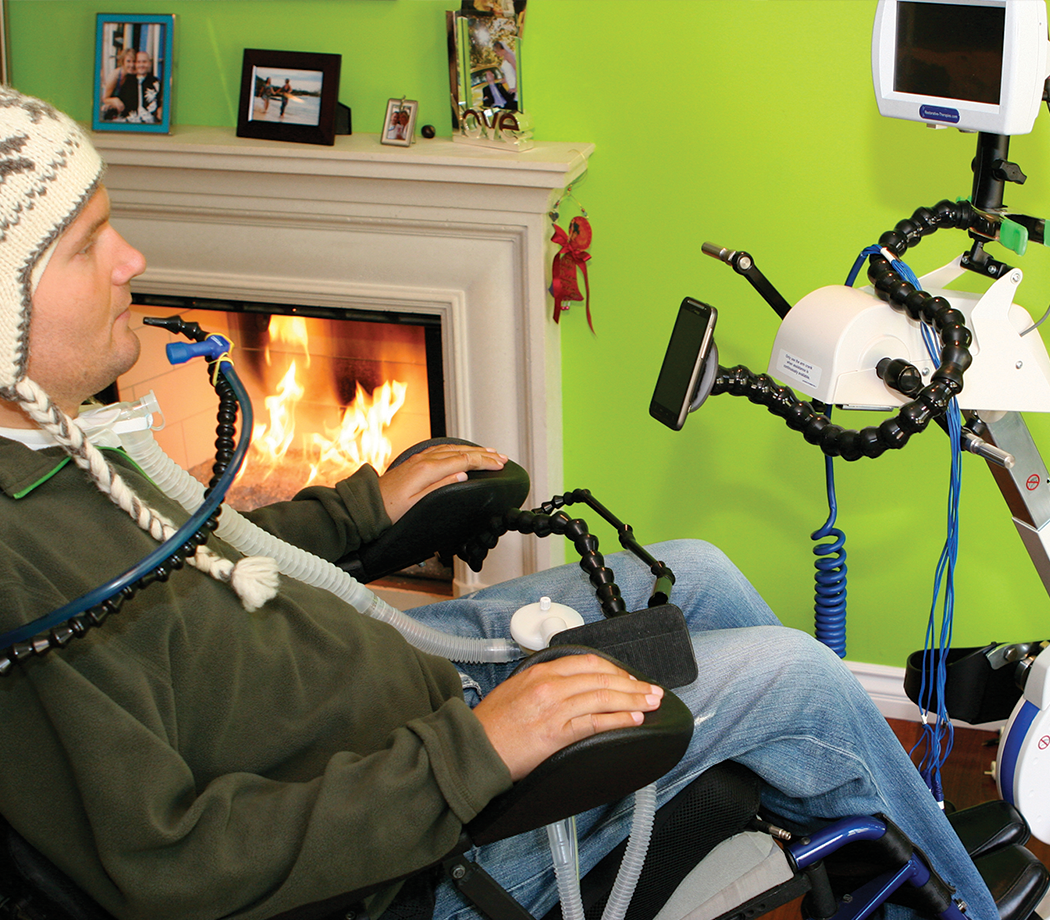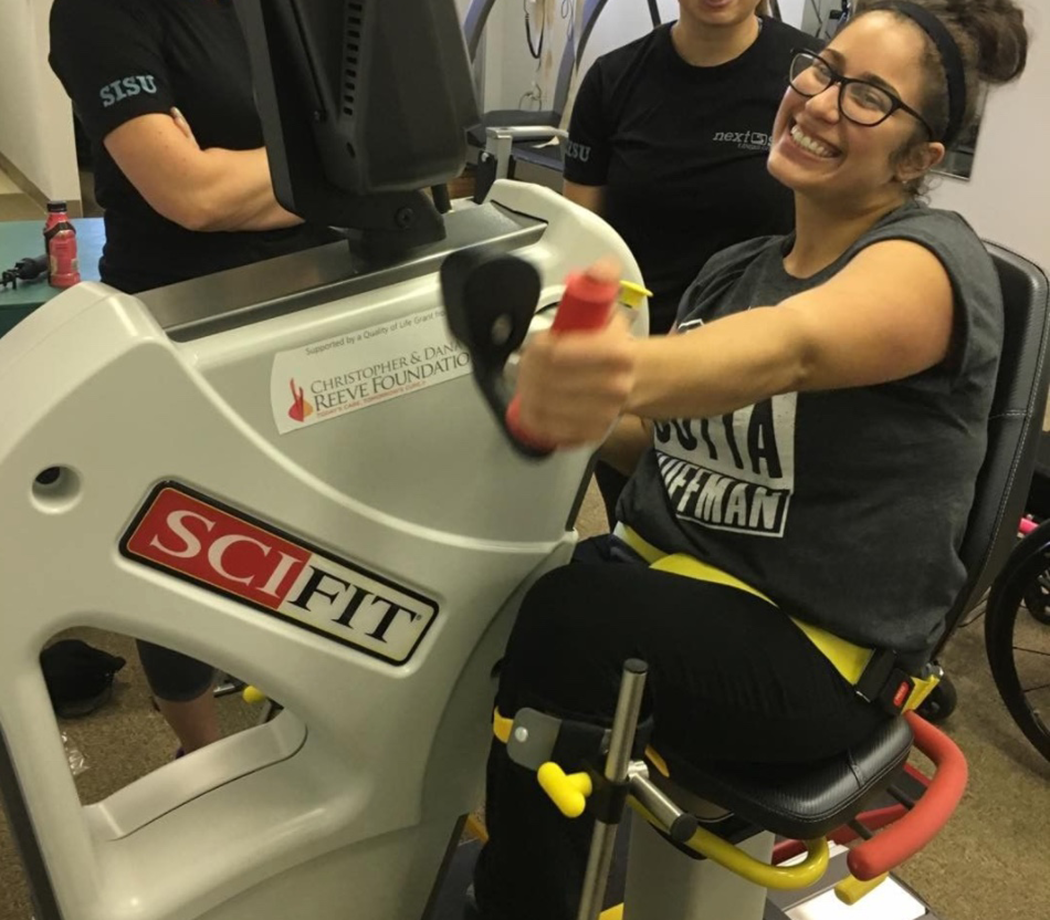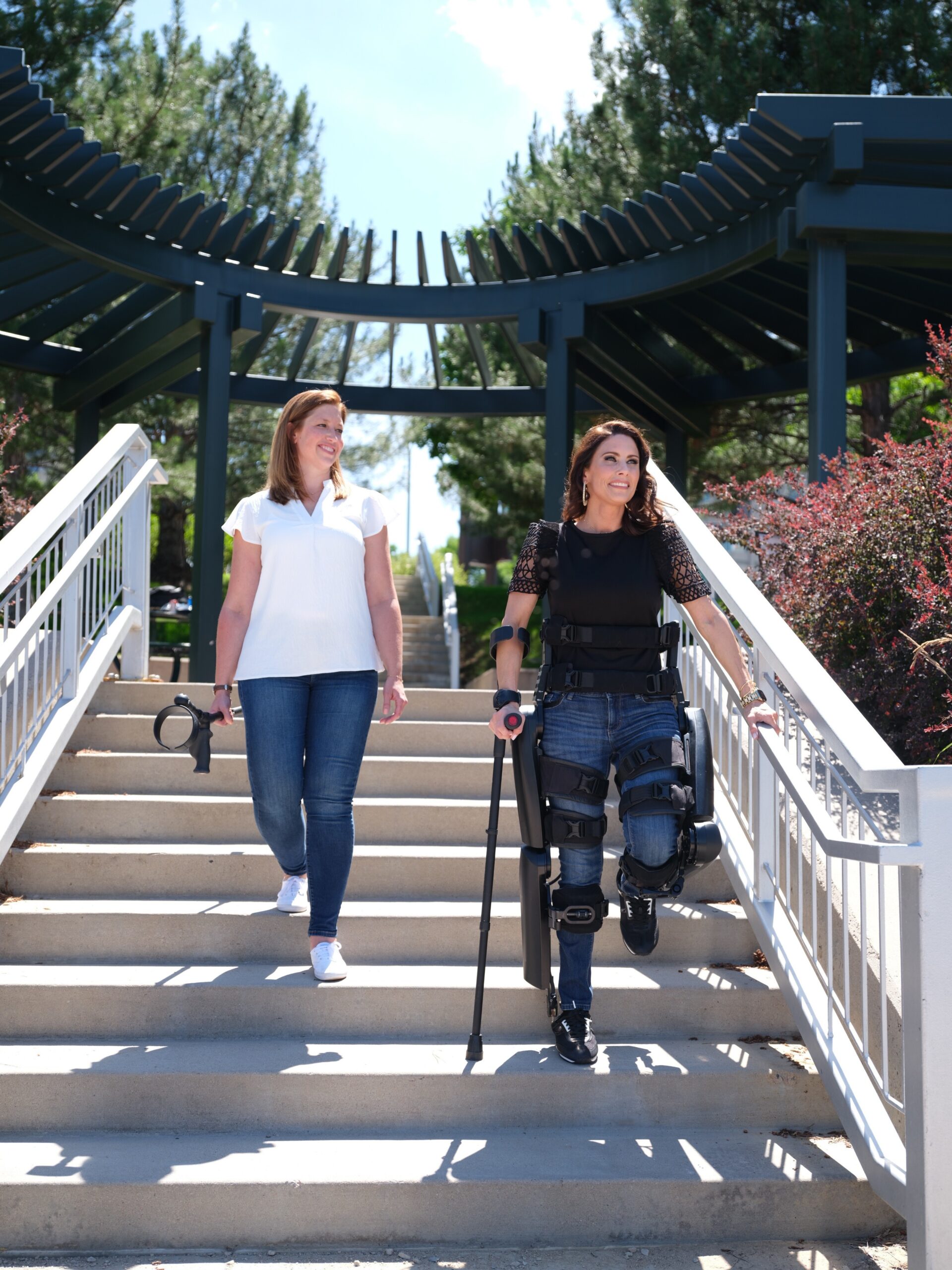Walking Systems and Braces
Overview of Orthoses
Orthoses and braces are tools common in rehabilitation, though somewhat less than in years past. This is due in part to cost cutting, limited clinical expertise and reduced time in rehab. There is also a general feeling among many users that orthoses are cumbersome and appear too bionic or “disabled” looking.
An orthosis might be used for positioning a hand, arm or leg, or to magnify or enhance function. It can also be as simple as a splint or as a complex as functional electrical stimulation (FES) brace for ambulation in paraplegics.
Below are several options for orthoses and emerging devices.
Wrist-hand Orthosis
Wrist-hand orthosis (WHO) transfers force from an active wrise to paralyzed fingers. This offers a grasping function for those with cervical injuries (generally between C4-C7). The WHO, also called a tenodesis splint, has been modified and simplified over the years, sometimes with the addition of batteries for power.
Ankle-foot Orthosis
Ankle-foot orthosis (AFO) is commonly used in people who have experienced strokes, multiple sclerosis, and incomplete spinal cord injury to assist the ankle and allow the foot to clear the ground during the swing phase of walking. There are many varieties, most have a molded heel cup that extends behind the calf.
Knee-ankle-foot Orthosis
Knee-ankle-foot orthosis (KAFO) allows someone living with paralysis (usually L3 and above) to stabilize the knee and ankle. While it’s very hard work, people using KAFO’s, even those with no hip flexion, can take steps by swinging their legs while supported by forearm crutches. There are many types of KAFOs, including plastic and metal braces.
Reciprocating Gait Orthosis
Reciprocating gait orthosis (RGO), which originated in Canada for children with spina bifida, consist of a pair of KAFOs with solid ankles, locking the knee joints, and legs and thigh straps. Each leg of the brace is attached to a pelvic unite with a hip joint, supporting hip flexion and extension. A steel cable assembly joins the two hip joints to limit step length.
By rotating the torso, the user shifts the weight to the forward leg; this permits the opposite leg to move forward. This kind of walking is stable and balanced, but slow and requires a great deal of energy.
Clinicians have added FES to the RGO to assist walking.
Parastep
A parastep is a “neuroprothesis,” a device that affects both the structure of the body ( as a brace) and the nervous system (substitute for damaged nerves). It is a portable FES system that facilitates reciprocal walking by stimulating leg muscles on cue. The movement is a bit robotic, but independent and functional for short periods of time.
Most people with spinal cord injuries between T4 and T12 can use a Parastep, which requires a physical therapy regime of 32 training sessions. The device is covered by Medicare for qualified users. For more information, reach out to Sigmedics.
Resources
If you are looking for more information or have a specific question, our Information Specialists are available business weekdays, Monday through Friday, toll-free at 800-539-7309..
Check out our repository of fact sheets on hundreds of topics ranging from state resources to secondary complications of paralysis.

